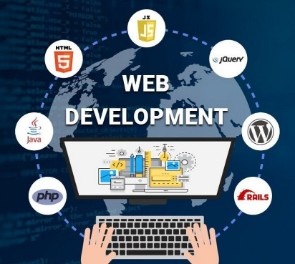
A Beginner's Guide to Full-Stack Web Development
Becoming a full-stack web developer is a rewarding journey that opens up numerous opportunities in the tech industry.
Introduction
In today's digital age, the demand for skilled web developers is soaring. Among the most sought-after professionals are full-stack web developers, who possess the ability to handle both front-end and back-end development. If you're new to this field, this guide will walk you through the essentials of full-stack web development, its importance, and how you can start your journey to becoming a proficient full-stack developer.
What is Full-Stack Web Development?
Full-stack web development refers to the development of both client-side (front-end) and server-side (back-end) portions of web applications. A full-stack developer is someone who can work on both ends, creating a seamless and efficient web application.
Front-End Development
The front-end is the part of a website that users interact with directly. It encompasses everything a user experiences in their web browser.
- Languages and Tools: HTML, CSS, JavaScript
- Frameworks: React, Angular, Vue.js
- Responsibilities: Designing user interfaces, ensuring responsive design, enhancing user experience
Back-End Development
The back-end is the server side of a web application. It manages the database, server, and application logic.
- Languages and Tools: Python, Java, Ruby, PHP
- Frameworks: Node.js, Django, Flask, Ruby on Rails
- Responsibilities: Database management, server-side logic, API integration
Why Choose Full-Stack Development?
Versatility
Full-stack developers are versatile. They can handle multiple aspects of web development, making them valuable assets to any team.
High Demand
With businesses increasingly moving online, the demand for full-stack developers has skyrocketed. Companies prefer hiring professionals who can manage both front-end and back-end tasks.
Comprehensive Understanding
Being proficient in both front-end and back-end development provides a comprehensive understanding of how web applications function, leading to better decision-making and problem-solving skills.
Essential Skills for Full-Stack Developers
Front-End Skills
- HTML/CSS
- HTML: The backbone of web pages, HTML structures the content.
- CSS: CSS styles the HTML content, making it visually appealing.
- JavaScript
- Adds interactivity to web pages.
- Understanding frameworks like React or Angular enhances capabilities.
Back-End Skills
- Server, Network, and Hosting Environment
- Knowledge of how servers work and how to manage them.
- Databases and Cache
- Familiarity with database management systems like MySQL, MongoDB, and caching mechanisms like Redis.
- Programming Languages
- Proficiency in languages like Python, Java, Ruby, or PHP.
- APIs (REST & SOAP)
- Understanding how to create and consume APIs.
DevOps
- Version Control/Git
- Managing and tracking changes in code using Git.
- Deployment and CI/CD
- Understanding the deployment process and Continuous Integration/Continuous Deployment pipelines.
Soft Skills
- Problem-Solving
- Ability to troubleshoot and solve issues effectively.
- Communication
- Clearly conveying ideas and collaborating with team members.
- Time Management
- Prioritizing tasks and managing time efficiently.
Tools and Technologies
Front-End Tools
- Text Editors and IDEs
- Visual Studio Code, Sublime Text
- Frameworks and Libraries
- React.js, Angular, Vue.js
- CSS Preprocessors
- Sass, LESS
Back-End Tools
- Frameworks
- Node.js, Django, Flask, Ruby on Rails
- Databases
- MySQL, PostgreSQL, MongoDB
- Web Servers
- Apache, Nginx
Version Control and Collaboration
- Git and GitHub
- Essential for version control and collaboration.
- Project Management Tools
- Jira, Trello, Asana
Learning Path for Beginners
Step 1: Master the Basics
HTML/CSS
- Start with the basics of HTML and CSS.
- Build simple web pages to practice.
JavaScript
- Learn core JavaScript concepts.
- Practice by adding interactivity to your HTML/CSS projects.
Step 2: Explore Front-End Frameworks
- Choose a Framework
- React, Angular, or Vue.js
- Build Projects
- Create small projects to apply your knowledge.
Step 3: Learn Back-End Development
- Choose a Language
- Python, Java, Ruby, or PHP
- Understand Databases
- Learn SQL and NoSQL databases.
- Build a Server
- Create a simple server using Node.js or any other back-end framework.
Step 4: Integrate Front-End and Back-End
- Full-Stack Projects
- Build projects that involve both front-end and back-end development.
- Learn how to connect the front-end with the back-end using APIs.
Step 5: Version Control and Deployment
- Git and GitHub
- Learn how to use Git for version control.
- Host your projects on GitHub.
- Deployment
- Understand the basics of deploying a web application.
Resources for Learning
Online Courses
- Udemy
- Full-Stack Web Development Bootcamp
- Coursera
- Full-Stack Web Development with React
- freeCodeCamp
- Comprehensive web development courses for free.
Books
- "Eloquent JavaScript" by Marijn Haverbeke
- "You Don't Know JS" by Kyle Simpson
- "HTML and CSS: Design and Build Websites" by Jon Duckett
Communities and Forums
- Stack Overflow
- A great place to ask questions and find answers.
- GitHub
- Collaborate on projects and learn from others.
- Reddit
- Subreddits like r/webdev and r/learnprogramming.
Conclusion
Becoming a full-stack web developer is a rewarding journey that opens up numerous opportunities in the tech industry. By mastering both front-end and back-end technologies, you can create comprehensive web applications that are both functional and aesthetically pleasing. Start with the basics, build your skills step by step, and take advantage of the plethora of resources available online. With dedication and practice, you’ll be navigating the world of full-stack web development like a pro in no time.